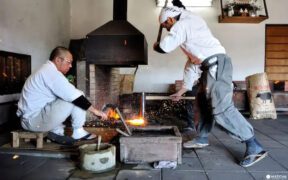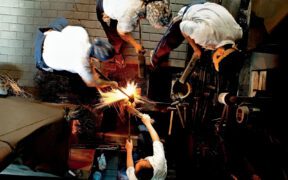Our content features commercial links to our products, committed to transparent, unbiased, and informed editorial recommendations. Learn More
What is Clay Tempered Katana: Tradition, Technique, Function
NO AI USED This Article has been written and edited by our team with no help of the AI
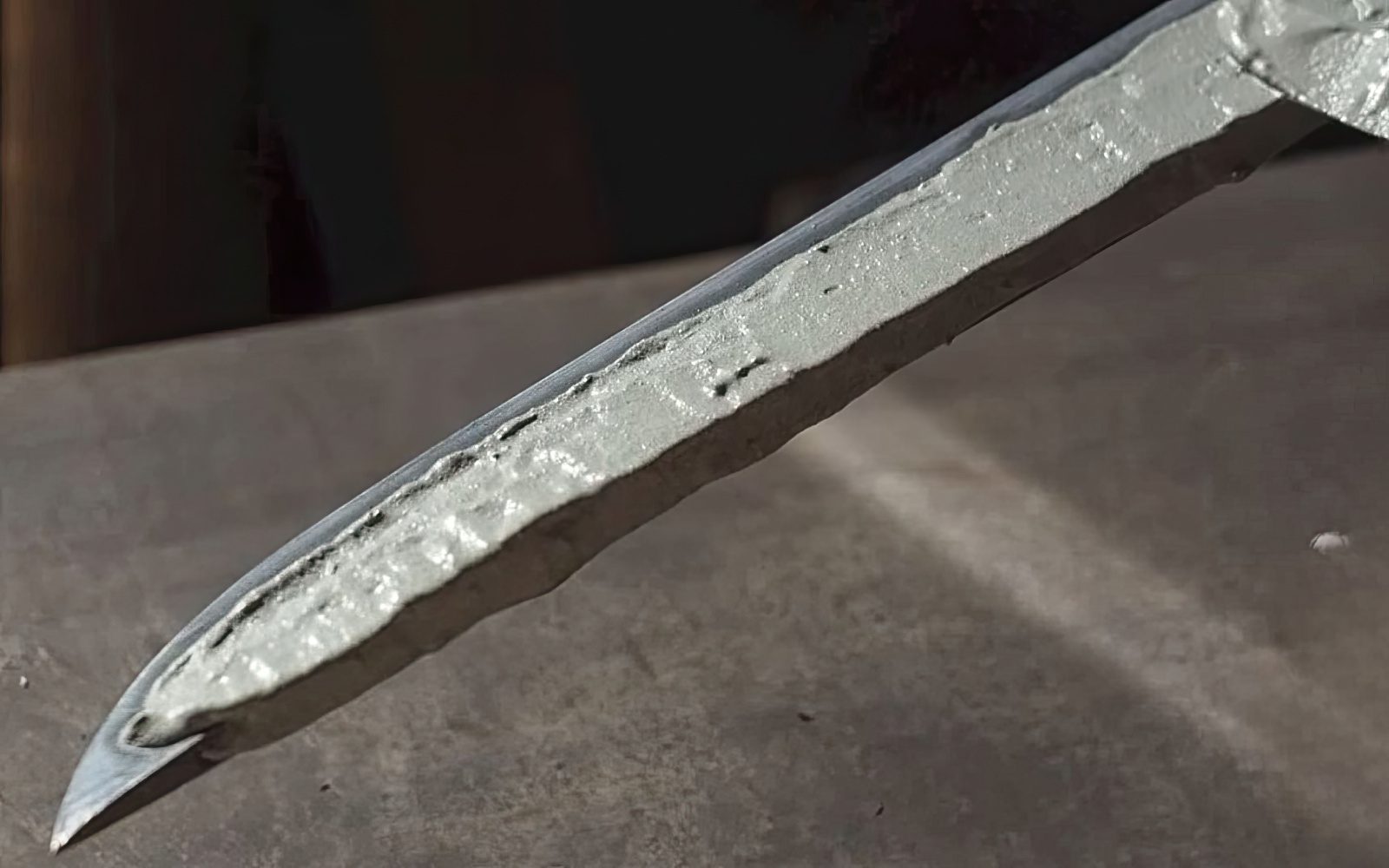
A traditionally designed Katana that has a hamon, a unique, and distinct blade pattern line, is likely to have been clay-tempered. These katanas are more authentic as Japanese swordsmiths have been using clay for differential treatment of their blades since 1000 years ago.
In this article, we explain what clay tempering means, its history, how it affects the blades, as well as the most popular clay-tempering methods and patterns today.
What is Clay-Tempering and Clay Tempered Katana?
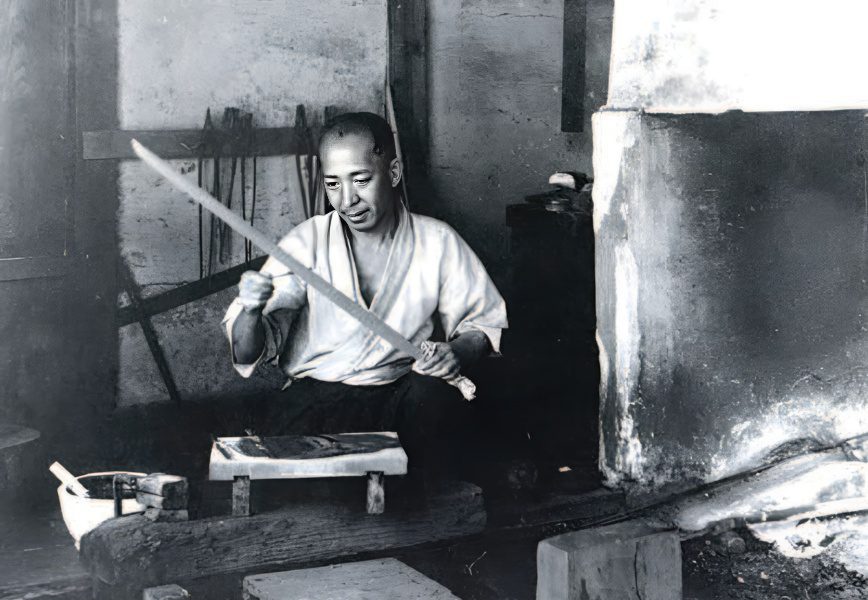
Clay tempering is a way people in Japan make swords strong and flexible. They use a method called Tsuchi-Oke. They put clay on the sword and heat it to about 1292°F (700°C). This makes the sword’s edge very hard and the middle part bendy.
Here’s how they do it:
- They spread clay on the sword.
- They heat the sword to a high temperature, 1292°F (700°C).
- Then, they cool it quickly in water or oil.
This process gives the sword a special curve and makes the edge super hard. The middle part stays more bendy because of the clay.
Katana Clay Tempering Process
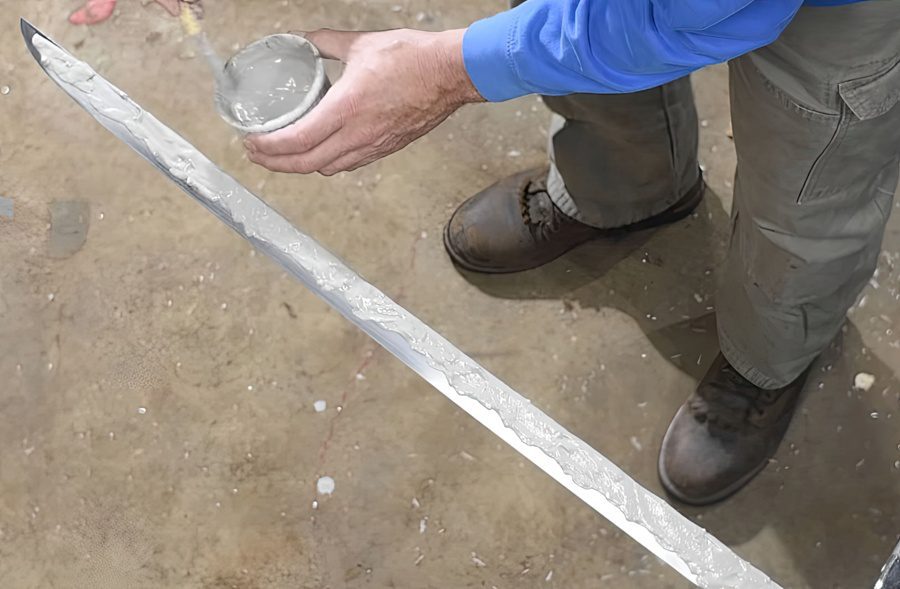
Clay tempered Katana swords cost more because they need a lot of effort to make. Here’s how it’s done:
First, you have to get the right materials and mix them to make the clay. This clay is then put on both sides of the sword’s blade, following a pattern chosen by the swordsmith. After applying the clay, it’s left to dry for a whole night.
The next part is heating the sword and then quickly cooling it in hot water or oil, a step known as yaki-ire. This part is really important and can be tricky. If the sword isn’t heated evenly, it might crack. When the quenching is done right, the next step is yaki-modoshi. This is when the sword is tempered to reduce stress in the clay and steel.
After all these steps, the clay’s effect on the sword isn’t visible yet because it’s under the steel. To show the sword’s unique pattern, called hamon, there’s a special and careful polishing process called kaji-togi.
Pros & Functions of Clay-Tempered Katanas
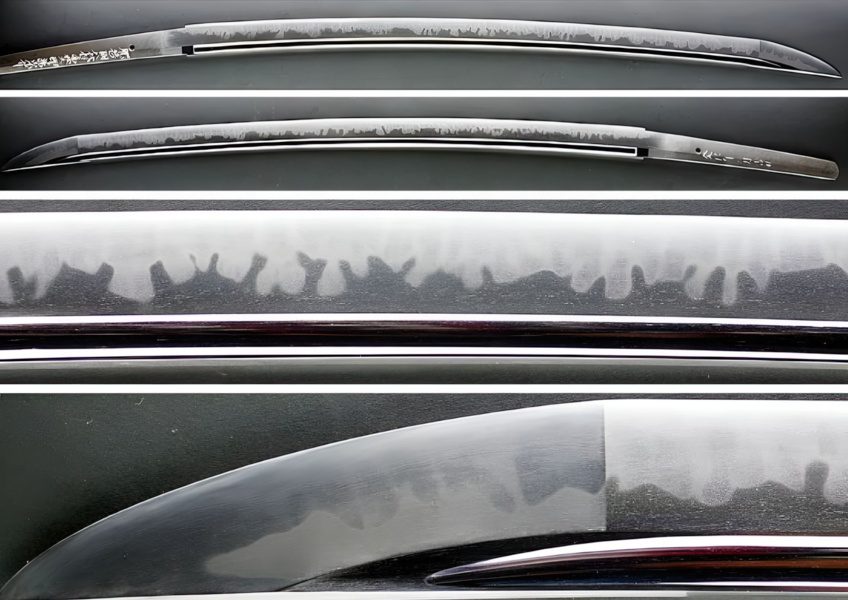
Some modern Katanas can be differentially hardened using modern techniques during the quenching process. Even in Japanese swordsmithing history, a method called Hadaki-Yaki would have resulted in a traditional hamon and different temper without the use of clay.
While that is the case, a clay-tempered Katana is more authentic as it is based on the steps followed by famous historical Japanese swordsmiths. Here are the biggest pros and functions that clay-tempered Katanas have.
- Differential Hardening – the blade is heated differently in different parts, resulting in a harder edge yet more flexible spine.
- Sharpness & Durability – the hardening allows the Katana edge (front) to cut better and become more durable as it is less likely to be damaged.
- Hamon Patterns – the clay tempering process and polishing results in a distinct and unique hamon pattern that can be chosen based on one’s personal preference.
- Craftsmanship Tradition – the process of clay tempering is a true testament to the artisan’s skills as well as respecting history.
